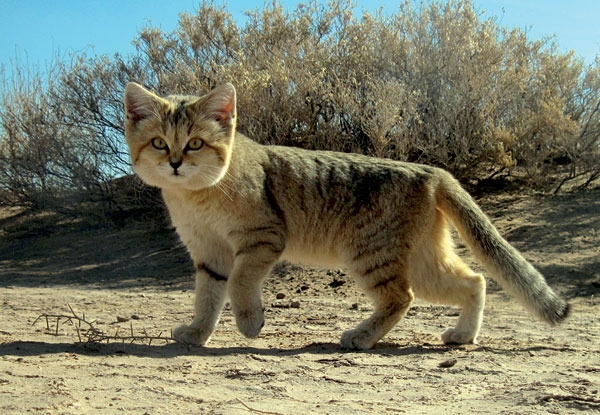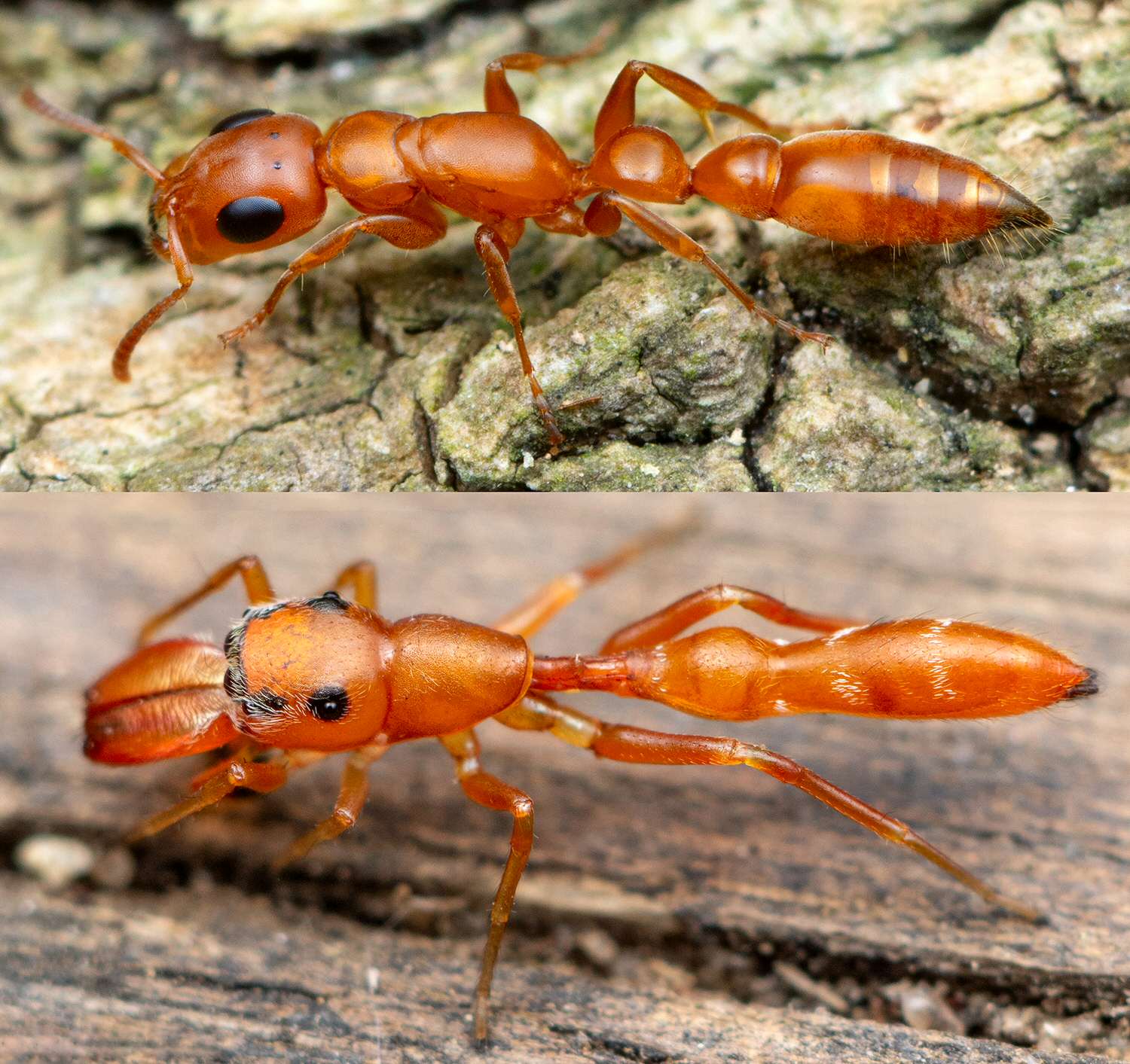|
Zodarion Wesolowskae
''Zodarion wesolowskae'' is a species of ant spider in the genus ''Zodarion'' that lives in Morocco. The species was first described in 2020 by Souâd Benhalima and Robert Bosmans. Only the male has been described, although Benhalima and Bosmans suggest that the female could be one of the spiders described as ''Zodarion trianguliferum''. The spider is small, typically long, with a plain brown to dark brown carapace and a black abdomen which has faint white stripes. The spider is a member of the ''mostafai'' group within the genus, which lack a tooth at the end of the embolus. It can be further distinguished from other members of the genus by its very long and thin tibial apophysis. The genus ''Zodarion'' is known to use ant mimicry for both defence against predators and to deceive ants to prey on them. This attribute could be used as a form of biological pest control. Taxonomy ''Zodarion wesolowskae'' was first described by Souâd Benhalima and Robert Bosmans in 2020. The specie ... [...More Info...] [...Related Items...] OR: [Wikipedia] [Google] [Baidu] |
Species
In biology, a species is the basic unit of classification and a taxonomic rank of an organism, as well as a unit of biodiversity. A species is often defined as the largest group of organisms in which any two individuals of the appropriate sexes or mating types can produce fertile offspring, typically by sexual reproduction. Other ways of defining species include their karyotype, DNA sequence, morphology, behaviour or ecological niche. In addition, paleontologists use the concept of the chronospecies since fossil reproduction cannot be examined. The most recent rigorous estimate for the total number of species of eukaryotes is between 8 and 8.7 million. However, only about 14% of these had been described by 2011. All species (except viruses) are given a two-part name, a "binomial". The first part of a binomial is the genus to which the species belongs. The second part is called the specific name or the specific epithet (in botanical nomenclature, also sometimes i ... [...More Info...] [...Related Items...] OR: [Wikipedia] [Google] [Baidu] |
Restriction Site Associated DNA Markers
Restriction site associated DNA (RAD) markers are a type of genetic marker which are useful for association mapping, QTL-mapping, population genetics, ecological genetics and evolutionary genetics. The use of RAD markers for genetic mapping is often called RAD mapping. An important aspect of RAD markers and mapping is the process of isolating RAD tags, which are the DNA sequences that immediately flank each instance of a particular restriction site of a restriction enzyme throughout the genome. Once RAD tags have been isolated, they can be used to identify and genotype DNA sequence polymorphisms mainly in form of single nucleotide polymorphisms (SNPs). Polymorphisms that are identified and genotyped by isolating and analyzing RAD tags are referred to as RAD markers. Although genotyping by sequencing presents an approach similar to the RAD-seq method, they differ in some substantial ways. Isolation of RAD tags The use of the flanking DNA sequences around each restriction site is a ... [...More Info...] [...Related Items...] OR: [Wikipedia] [Google] [Baidu] |
Salticidae
Jumping spiders are a group of spiders that constitute the family Salticidae. As of 2019, this family contained over 600 described genera and over 6,000 described species, making it the largest family of spiders at 13% of all species. Jumping spiders have some of the best vision among arthropods and use it in courtship, hunting, and navigation. Although they normally move unobtrusively and fairly slowly, most species are capable of very agile jumps, notably when hunting, but sometimes in response to sudden threats or crossing long gaps. Both their book lungs and tracheal system are well-developed, and they use both systems (bimodal breathing). Jumping spiders are generally recognized by their eye pattern. All jumping spiders have four pairs of eyes, with the anterior median pair being particularly large. Distinguishing characteristics Jumping spiders are among the easiest to distinguish from similar spider families because of the shape of the cephalothorax and their eye pa ... [...More Info...] [...Related Items...] OR: [Wikipedia] [Google] [Baidu] |
Fauna Of Morocco
The wildlife of Morocco is composed of its flora and fauna. The country has a wide range of terrains and climate types and a correspondingly large diversity of plants and animals. The coastal areas have a Mediterranean climate and vegetation while inland the Atlas Mountains is forested. Further south, the borders of the Sahara Desert are increasingly arid. Large mammals are not particularly abundant in Morocco, but rodents, bats, and other small mammals are more plentiful. Four hundred and ninety species of birds have been recorded here. Geography Morocco is a country in northwestern Africa; land borders include Western Sahara in the southwest and Algeria to the south and east. To the north and west, Morocco has a long coastline on the Atlantic Ocean; to the north lies the Strait of Gibraltar and the Mediterranean Sea. It encompasses a wide range of terrain types; there is a coastal plain in the north, and many mountain ranges running from east to west across the country, with t ... [...More Info...] [...Related Items...] OR: [Wikipedia] [Google] [Baidu] |
Khénifra Province
{{BéniMellalKhénifra-geo-stub ...
Khénifra is a province in the Moroccan region of Béni Mellal-Khénifra. was 511,53 The major cities and towns are* Aguelmous * Aït Ishaq * Amalou Ighriben * El Kbab * Had Bouhssoussen * Kehf Nsour * Kerrouchen * Khenifra * Moulay Bouazza * M'Rirt * Tighassaline * Tighza Subdivisions The province is divided administratively into the following: References Khénifra Province Khénifra is a province in the Moroccan region of Béni Mellal-Khénifra. was 511,53 The major cities and towns are* Aguelmous * Aït Ishaq * Amalou Ighriben * El Kbab * Had Bouhssoussen * Kehf Nsour * Kerrouchen * Khenifra * Moulay Bou ... [...More Info...] [...Related Items...] OR: [Wikipedia] [Google] [Baidu] |
Oum Er-Rbia River
Oum Er-Rbia ( Berber: ⴰⵙⵉⴼ ⵏ ⵉⵙⴰⴼⴻⵏ, ar, أم الربيع, "the mother of springtime", spelling Oum el- rbia, is a large, long and high-throughput river in central Morocco. The river is long. With an average water throughput of 105 m3/s, Oum Er-Rbia is the second-largest river in Morocco after the Sebou River. It originates in the Middle Atlas and passes through the city of Khénifra, arriving at its mouth at the Atlantic Ocean at the port of Azemmour, located on its left bank. Oum Er-Rbia has six dams, the most important of which is Al Massira Dam. Its most important tributaries are El-Abid River, Tessaoute River, and Lakhdar River. The historical Berber nickname of the river was Asif n Isaffen, meaning "the river of rivers". According to scholars, the original Berber common name of the river is Wansifen and was only changed recently, circa 16th or 17th century, and a nearby village called Oum Rabia might have influenced this change. Oum Er-Rbia i ... [...More Info...] [...Related Items...] OR: [Wikipedia] [Google] [Baidu] |
Endemism
Endemism is the state of a species being found in a single defined geographic location, such as an island, state, nation, country or other defined zone; organisms that are indigenous to a place are not endemic to it if they are also found elsewhere. For example, the Cape sugarbird is found exclusively in southwestern South Africa and is therefore said to be ''endemic'' to that particular part of the world. An endemic species can be also be referred to as an ''endemism'' or in scientific literature as an ''endemite''. For example '' Cytisus aeolicus'' is an endemite of the Italian flora. '' Adzharia renschi'' was once believed to be an endemite of the Caucasus, but it was later discovered to be a non-indigenous species from South America belonging to a different genus. The extreme opposite of an endemic species is one with a cosmopolitan distribution, having a global or widespread range. A rare alternative term for a species that is endemic is "precinctive", which applies to ... [...More Info...] [...Related Items...] OR: [Wikipedia] [Google] [Baidu] |
Subfamily
In biological classification, a subfamily (Latin: ', plural ') is an auxiliary (intermediate) taxonomic rank, next below family but more inclusive than genus. Standard nomenclature rules end subfamily botanical names with "-oideae", and zoological names with "-inae". See also * International Code of Nomenclature for algae, fungi, and plants * International Code of Zoological Nomenclature * Rank (botany) * Rank (zoology) In biological classification, taxonomic rank is the relative level of a group of organisms (a taxon) in an ancestral or hereditary hierarchy. A common system consists of species, genus, family, order, class, phylum, kingdom, domain. While ... Sources {{biology-stub ... [...More Info...] [...Related Items...] OR: [Wikipedia] [Google] [Baidu] |
Ant Mimicry
Ant mimicry or myrmecomorphy is mimicry of ants by other organisms. Ants are abundant all over the world, and potential predators that rely on vision to identify their prey, such as birds and wasps, normally avoid them, because they are either unpalatable or aggressive. Spiders are the most common ant mimics. Additionally, some arthropods mimic ants to escape predation (protective mimicry), while others mimic ants anatomically and behaviourally to hunt ants in aggressive mimicry. Ant mimicry has existed almost as long as ants themselves; the earliest ant mimics in the fossil record appear in the mid Cretaceous alongside the earliest ants. Indeed one of the earliest, ''Burmomyrma'', was initially classified as an ant. In Wasmannian mimicry, mimic and model live commensally together; in the case of ants, the model is an inquiline in the ants' nest. Wasmannian mimics may also be Batesian or aggressive mimics. To simulate ants' powerful defences, mimics may imitate ants chemically w ... [...More Info...] [...Related Items...] OR: [Wikipedia] [Google] [Baidu] |
Apophysis (spider)
This glossary describes the terms used in formal descriptions of spiders; where applicable these terms are used in describing other arachnids. Links within the glossary are shown . Terms A Abdomen or opisthosoma: One of the two main body parts ( tagmata), located towards the posterior end; see also Abdomen § Other animals Accessory claw: Modified at the tip of the in web-building spiders; used with to grip strands of the web Anal tubercle: A small protuberance (tubercule) above the through which the anus opens Apodeme → Apophysis (plural apophyses): An outgrowth or process changing the general shape of a body part, particularly the appendages; often used in describing the male → Atrium (plural atria): An internal chamber at the entrance to the in female haplogyne spiders B Bidentate: Having two Book lungs: Respiratory organs on the ventral side (underside) of the , in front of the , opening through narrow slits; see also Book lungs Branchial operculum → ... [...More Info...] [...Related Items...] OR: [Wikipedia] [Google] [Baidu] |
Palpal Bulb
The two palpal bulbs – also known as palpal organs and genital bulbs – are the copulatory organs of a male spider. They are borne on the last segment of the pedipalps (the front "limbs" of a spider), giving the spider an appearance often described as like wearing boxing gloves. The palpal bulb does not actually produce sperm, being used only to transfer it to the female. Palpal bulbs are only fully developed in adult male spiders and are not completely visible until after the final moult. In the majority of species of spider, the bulbs have complex shapes and are important in identification. Structure The palpal bulb of a mature male spider is borne on the last segment of the pedipalp. This segment usually has touch-sensitive hairs (setae) with nerves leading to them. The bulb itself is entirely without nerves, and hence without sensory organs and muscles, since these depend on nerves for their functioning, although some spiders have one or two muscles external to the bulb and ... [...More Info...] [...Related Items...] OR: [Wikipedia] [Google] [Baidu] |
Arthropod Leg
The arthropod leg is a form of jointed appendage of arthropods, usually used for walking. Many of the terms used for arthropod leg segments (called podomeres) are of Latin origin, and may be confused with terms for bones: ''coxa'' (meaning hip, plural ''coxae''), ''trochanter'', ''femur'' (plural ''femora''), ''tibia'' (plural ''tibiae''), ''tarsus'' (plural ''tarsi''), ''ischium'' (plural ''ischia''), ''metatarsus'', ''carpus'', ''dactylus'' (meaning finger), ''patella'' (plural ''patellae''). Homologies of leg segments between groups are difficult to prove and are the source of much argument. Some authors posit up to eleven segments per leg for the most recent common ancestor of extant arthropods but modern arthropods have eight or fewer. It has been argued that the ancestral leg need not have been so complex, and that other events, such as successive loss of function of a ''Hox''-gene, could result in parallel gains of leg segments. In arthropods, each of the leg segments ar ... [...More Info...] [...Related Items...] OR: [Wikipedia] [Google] [Baidu] |




.jpg)



